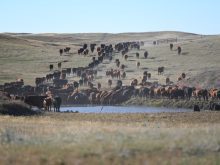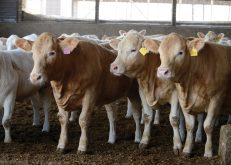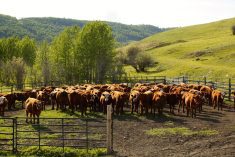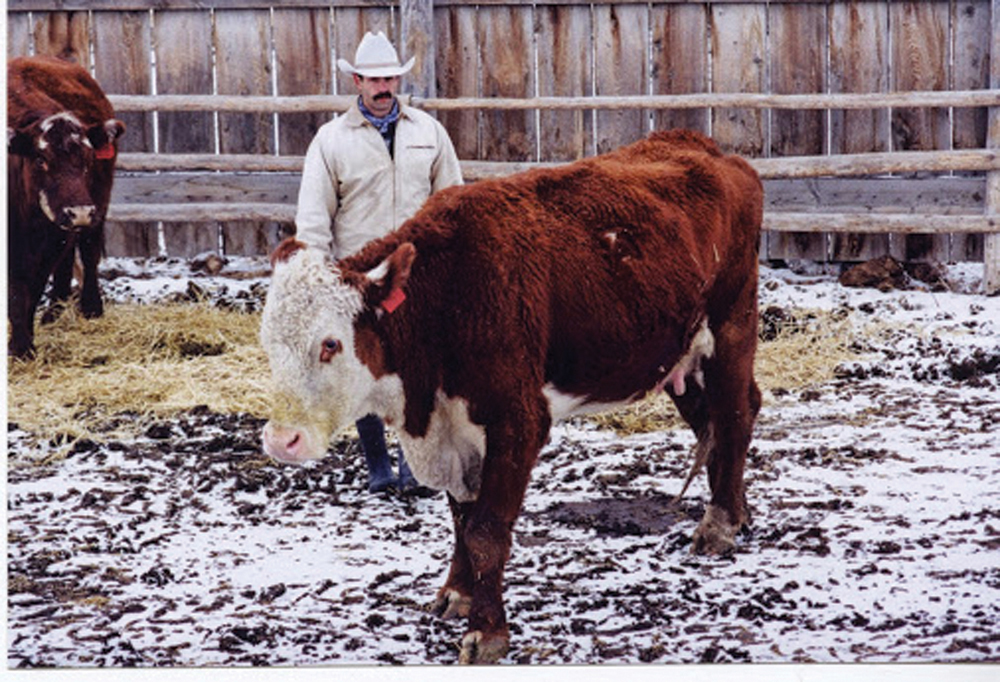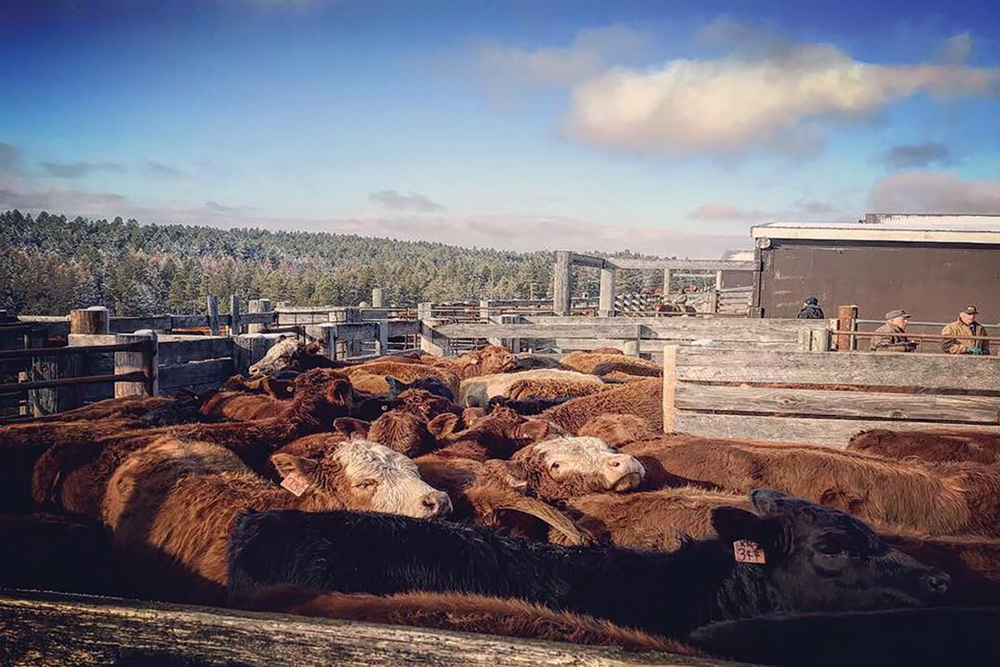Cattle are smart and adaptable, learning from their mothers and the environment around them. They respond to good handling by becoming easy to manage. Mishandled, they react with suspicion or fear when they see people, and can become “wild” and difficult to handle.
Many ranchers are learning the value of low-stress handling and how easy it is to manage cattle that trust people (due to consistent, non-confrontational methods). Their cattle are comfortable with being gathered and sorted, rather than reacting with fear.
Fenton Herefords at Irma, Alta. has raised thousands of heifers. Al Fenton says his cattle have good dispositions and are easy to handle, partly from genetic selection but largely due to the way they are handled. Cattle can be trained to do the right thing when sorting them if you use the same patient techniques as when training a horse.
Read Also

Harvest wraps up and fall work begins
At the Eppich famly ranch in western Saskatchewan, the fall harvest was successful with few breakdowns, cows and calves have been sorted and a new tractor has arrived
“We handle all our cattle on horses,” says Fenton. “When we’re sorting large groups we gather and hold them in a group and teach them to be held. When heifer calves are with their mothers they are held that way for sorting. When we handle them as yearlings they are also held that way. When we trail to pasture several miles away, they line out and know what to do.
“When we hold a group we make them stay. If a heifer wants to take off, we don’t chase her. A rider just circles around her. Usually she won’t run far. We just let her stand a minute and then a rider can ease around to put her back in the bunch, and continue to hold until all of them are settled.”
Fenton says if horses have been taught the right way, with a calm effect, it transfers to the cattle and they are calm and co-operative when moved while making very little noise. “Just the body language of your horse can teach your cattle.”

Working slowly and quietly makes everything easier and saves time, he says. It is important to make sure cattle understand what you want, giving them time to figure it out. They learn to think and wait and look for your instruction rather than seeking the first way out. They will learn to look to you for guidance rather than explosively reacting as if you were a predator.
“They like to stay in their familiar groups,” Fenton says. “When you settle that bunch as a group, they’ll be content and learn to stay in it. When gathering, we have two or three riders hold the group while other riders bring more out of the bush. Most of those cattle will head for the group that’s being held. If you do it right, cattle will do a lot of the gathering and sorting for you.”
Patience, being able to read the cattle, and knowing your terrain makes a difference.
“Know where the areas are where you can win, and set yourself up to win,” Fenton says. “You can then teach your cattle. If you make it seem like their idea to do what you want, it becomes a lot easier.”
Start with a calm one
The key is to pick a calm, dependable animal to start the first sort.
“I always choose a cow or heifer I think will stay calm, and take her about 200 yards away and stop her,” Fenton says. “I let her sit there and a rider stays there and holds her. The next one we bring out, we take to her.”
Once you have several in that little group they are easy to hold as you bring more out of the herd to put with them.
With 600 purebred cows, Fenton sorts into groups of 30.
“Once we get the 30 that will be going to a certain pasture, we take that group and move them to a spot where we can hold them, and start sorting again,” he says. This is much quieter and calmer — easier on the cattle and the people sorting them.
“This way we don’t have the turmoil and stress of sorting in a tight area like a corral.”
You can do a lot even with poor facilities, if cattle are trained to be manageable, Fenton says. If you understand cattle, you just sort toward their tendencies. Then your desire for direction and movement seems like their idea.
“When it’s their idea, you win every time,” Fenton says. If cattle are calm and know where they are going and what they are doing, it works nicely. You give them an easy out and they take it — without being stressed. It’s just like training a horse; make the right thing easy and the wrong thing harder.
He says the yelling and screaming that happens in many corrals puts a lot of stress on the cattle, the work crew and families. That stress all goes away if enough thought goes into planning how you’re going to sort those cattle. It is important to do some training ahead of time. “The more you can let them think for themselves, and have them flow in the right direction, the more you will win — with a lot less stress on everybody,” Fenton says.



